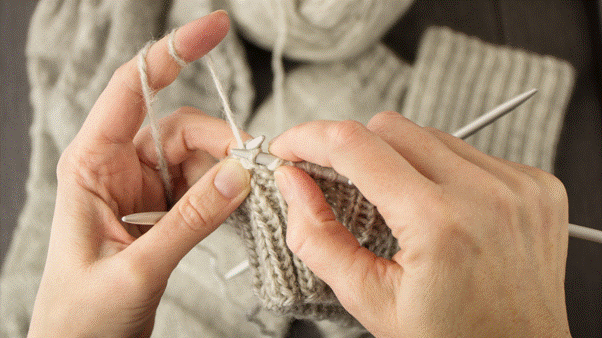Whether you’re drawn to the intricate patterns, cozy garments, or the therapeutic rhythm of the needles, knitting has something to offer everyone. If you’re new to this delightful craft, fear not! This beginner’s guide will take you through the necessary steps to get started on your knitting journey.
By the end of this article, you’ll be well on your way to creating beautiful knitted creations and experiencing the joy of this timeless art.
A Beginner’s Guide to Knitting: 5 Necessary Steps
For beginners, the following 5 necessary steps will help them understand the art of knitting:
Step #1: Gather Your Materials
Before diving into knitting, it’s essential to gather all the necessary materials. The first item you’ll need is yarn. Choose a yarn suitable for beginners, such as a medium-weight acrylic or wool blend, as it’s easier to work with. Next, you’ll require knitting needles. Opt for a pair of straight needles in a size appropriate for your chosen yarn. Other useful tools to include in your knitting basket are a pair of scissors, a tapestry needle for weaving in ends, and stitch markers to keep track of your progress. Investing in a knitting needle organizer can help keep your tools organized and easily accessible.
Step #2: Learn the Basic Stitches
Now that you have your materials, it’s time to learn the basic stitches. The foundation of knitting lies in two fundamental stitches: the knit stitch and the purl stitch. With the knit stitch, you create a smooth, v-shaped stitch, while the purl stitch produces a raised, bumpy texture. By combining these stitches in various patterns, you can create intricate designs. Take your time to practice these stitches until you feel comfortable and can produce consistent tension.
Step #3: Start with Simple Projects
To build confidence and practice your newfound skills, begin with simple knitting projects. Scarves, dishcloths, and baby blankets are excellent choices for beginners. These projects allow you to focus on your stitches without the added complexity of shaping or fitting. As you complete more projects, you’ll gradually gain experience and move on to more intricate designs.
Step #4: Expand Your Skills
Once you’ve mastered the basic stitches, it’s time to expand your skills. Explore different knitting techniques such as cables, lacework, or colorwork. These techniques add texture, interest, and depth to your projects. Don’t be afraid to try new things and challenge yourself. Knitting offers boundless avenues for creative expression, making it a highly adaptable craft.
Step #5: Join a Knitting Community
Knitting is not just a solitary pursuit; it’s also a social activity. Joining a knitting community, either in person or online, allows you to connect with fellow knitters, share ideas, and seek guidance when needed. Knitting groups often hold workshops, classes, and knitting circles, providing opportunities to learn and grow as a knitter. The support and camaraderie of a knitting community can greatly enhance your knitting journey.
Conclusion
Embarking on a knitting adventure opens up a world of creativity and relaxation. By following these five necessary steps, you’ll be well on your way to becoming a skilled knitter. Remember to gather your materials, learn the basic stitches, start with simple projects, expand your skills, and join a knitting community. Don’t forget to keep your tools organized with a handy knitting needle organizer and make use of knitting baskets to store your supplies.







